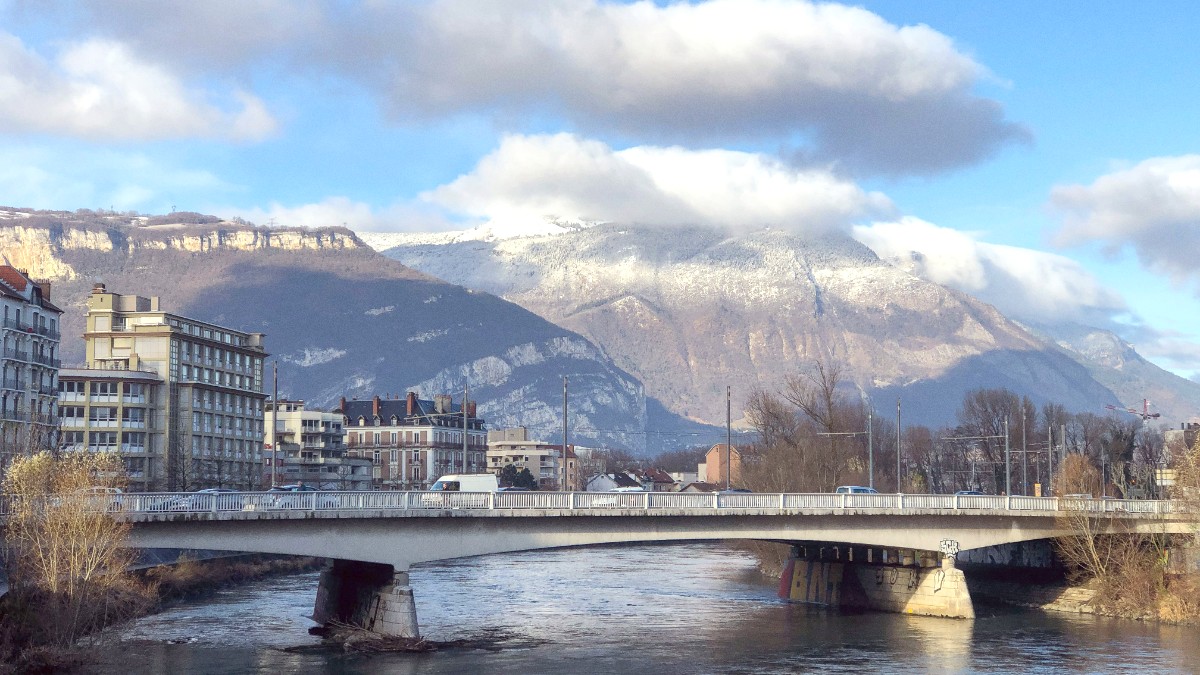
The French Alps, France
The Bastille Fort is a required visit. It is an ancient fort perched high above the city, offering unparalleled panoramic views of Grenoble, the Isère valley, and the surrounding Alps.
The Grenoble-Bastille cable car ride itself provides a memorable experience in its glass "bubbles."
Check official websites for current opening hours and special exhibitions before your visit.
This ancient crypt, dating from the 9th to 11th centuries, lies beneath the Saint-Laurent church. It offers insights into early Christian architecture and the city's earliest religious history. It forms part of the Musée archéologique de Grenoble.
Beyond the crypt, archaeological excavations throughout Grenoble have unveiled various Roman remains, indicating the city's ancient origins. Some are viewable in situ or at museums.
Grenoble played a role in the French Revolution, notably the "Day of the Tiles" in 1788. Historical markers around the city recount these events.
The city also holds significance for its role in the French Resistance during World War II, earning the title "Compagnon de la Libération." The Musée de la Résistance provides context.
Observe the diverse architectural styles, from medieval and Renaissance buildings in the Old Town to Haussmannian structures in the hyper-centre.
Grenoble's identity roots in its surrounding natural beauty, offering many outdoor places for exploration.
Located immediately north of Grenoble, this regional natural park offers numerous hiking trails suitable for various skill levels. It also features caves and the Grande Chartreuse monastery (which does not open to the public, but a viewpoint is available).
Situated west and south of Grenoble, this park is known for its high plateaus, dramatic cliffs, and diverse wildlife. It provides excellent opportunities for hiking, cycling, and caving. For exploring these natural parks, consider a Detailed hiking map. It helps with navigation and route planning.
East of Grenoble, these mountains stand higher and more rugged. They offer opportunities for serious hiking and mountaineering, appealing to experienced adventurers.
Pleasant walking and cycling paths extend along the Isère River. These paths offer scenic views of the city skyline and the surrounding mountains, providing a peaceful urban escape.
This large urban park sits in the city center. It holds the Olympic flame tower from the 1968 Winter Olympics. The park holds popularity for recreation, including jogging, picnics, and family outings.
These terraced gardens lead up to the Bastille. They offer nice views and a tranquil escape, providing a quiet space for relaxation and short walks amidst greenery.
The Musée de la Résistance et de la Déportation de l'Isère provides a poignant look into WWII history. Admission is free.
Discover impressive murals and graffiti, notably in the Berriat district. The annual Street Art Fest (June) brings new works.
A fascinating oriental-style villa from the 19th century in Saint-Martin-le-Vinoux. Check specific tour days for this architectural curiosity.
Beyond the main attractions, Grenoble holds several less-visited but equally interesting places.
Here are some suggestions for different visit durations.
These itineraries maximize your experience, considering travel time between sites.
Ideal for a quick visit or if you have limited time. Focus on the core Grenoble experience.
A comprehensive day for engagement with Grenoble's art, history, and natural beauty.
Allows for a relaxed pace and time to explore beyond the city center.
For longer visits, expand on the weekend plan with explorations.
Grenoble offers various guided tours that enhance your understanding and enjoyment of the city's attractions.
Explore the Old Town's hidden alleys and historic squares with a local guide. Learn about Grenoble's past and architectural gems. The Tourist Office organizes these frequently.
Tours focusing on the Bastille fort explain its military history and offer perspectives on the surrounding mountains. These often include the cable car ride. Some tours are available via GetYourGuide.
Discover Grenoble's street art scene with a guide who can explain the artists and the stories behind the murals. Check with local art collectives or the Tourist Office.
Join a food tour to sample local products at markets and specialty shops. Some tours include tastings of cheeses, walnuts, and regional wines.
Find Food ToursExplore Grenoble's extensive bike lanes and riverside paths with a guided bike tour. This option covers more ground while staying active.
For a personalized experience, hire a private guide who can tailor a tour to your specific interests, whether history, art, or outdoor adventures.
Guided excursions into the Chartreuse or Vercors parks offer insights into Alpine flora, fauna, and geology. These range from easy walks to challenging hikes.
Many self-guided audio tours or mobile apps exist for popular attractions, allowing you to explore at your own pace with historical commentary.
Online platforms offer convenience for reservations.
Guided tours frequently offer historical context and local anecdotes that you might miss exploring independently. This enrichment deepens your understanding of Grenoble.
Many guides are passionate locals who offer unique perspectives on their city and region.
Grenoble's location makes it a gateway to the wider French Alps, offering numerous day trip opportunities.
Explore the stunning natural parks surrounding Grenoble, suitable for various outdoor activities.
Discover charming towns with their own unique history and character, a short drive from Grenoble.
Relax and rejuvenate at thermal spas in the region, known for their therapeutic waters.
A perfect escape for relaxation after active days.
Enjoy the serene beauty of the surrounding Alpine lakes, offering water sports and scenic relaxation.
Ideal for cooling off in summer or enjoying nature's tranquility.
Grenoble sits close to world-class ski resorts, perfect for winter sports enthusiasts.
Access to premier skiing and snowboarding is within reach.
Consider renting a car for flexibility or using regional buses and trains for public transport options to these destinations.
Allow ample time for travel and exploration. Some mountain roads may involve longer journeys.
Check mountain weather forecasts before heading out, especially for hiking or ski trips.